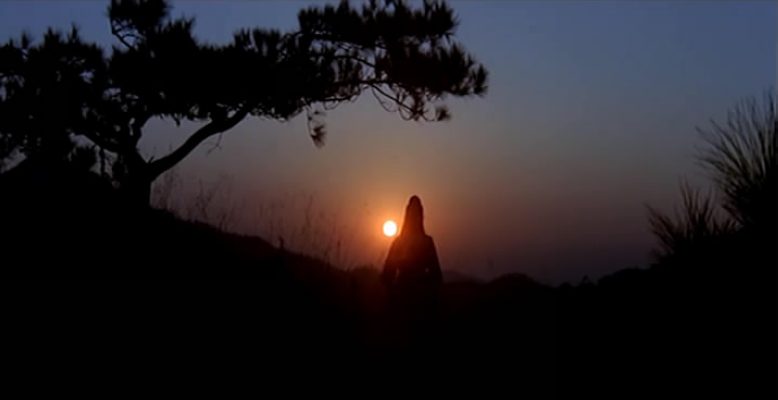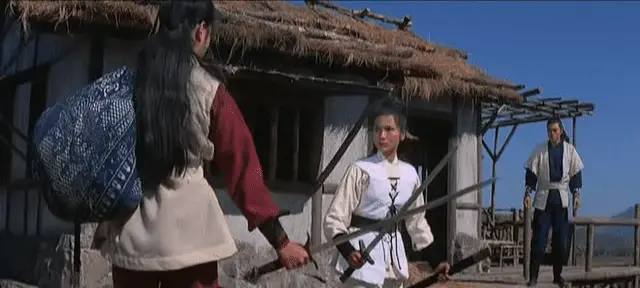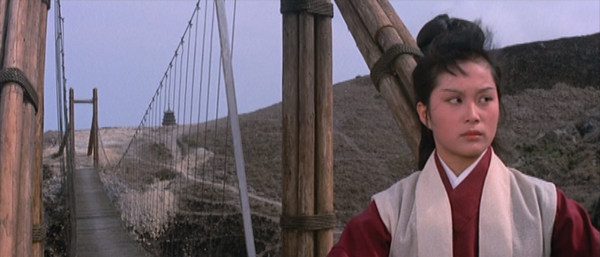Before there was Michelle Yeoh, Cynthia Kahn, or Tiana Alexandra, there was Cheng Pei-pei. Considered to be the first lady action hero in cinema, or more precisely, the first woman lead in martial arts films, her career spans from 1964 to the present. Her most famous films were for the Shaw Brothers studios and the versatile and impossible-to-classify director Ho Meng Hua.
One of their collaborations, Cheng’s last film for the Shaw Brothers, The Lady Hermit, stands as one of the best wuxia films of the period. Wuxia films are action-packed melodramas, often with a supernatural twist. The most famous is Ang Lee’s Crouching Tiger, Hidden Dragon, a movie that stars Michelle Yeoh and Cheng Pei-pei.

The Lady Hermit displays Ho’s keen eye for staging and his deft hand at balancing conflicting tones. He’s helped considerably by I. Fang Yeh’s script that blends a classic love triangle, the age-old trope of a student seeking a master, a villainous martial arts master that exploits the working class, all with a healthy dollop of action. Ho and Yeh subtly strip down The Lady Hermit to its bare essentials without sacrificing heart and layered characterizations.
One of the remarkable aspects of The Lady Hermit is how much the film respects the audience’s intelligence. Chin Tsui-peng (Shih Szu) arrives in a village searching for the Lady Hermit, a famed martial artist, hoping to become her student. At the same time as Tsui-peng’s arrival, we also meet Shang Yu-ling (Cheng Pei-pei), a maid for the local private security firm. She watches Tsui-peng as the other woman effortlessly dispatches a gang of hoodlums in the town square.
Ho and his team of camerapeople Lam Kwok-Cheung, Danny Lee-Yau-Tong, and Cho Wai-Kei show Shang reaching for a weapon, aching to get into battle. But she stops once she sees Tsui-peng has it well in hand. Yeh’s script cleverly hints early on that Yu-Ling is the Lady Hermit and trusts the audience to get the hint. The result is that we understand the lowly maid is the hero long before our traveling heroine does.
Yeh’s script masterfully sets up a classic love triangle wherein everybody involved is oblivious to the feelings of the others. Tsui-peng and Yu-ling have eyes for the handsome Wu Chang-chun (Lo Leih). The tension comes not merely from waiting to see these three people wake up and realize the other’s feelings but also from the consequences of this moment. Yeh and Ho have slyly set up a scenario in that Yu-ling teaches Tsui-peng while Tsui-peng teaches what she’s learned that day to Chang-chun that night. The martial arts training combines action and a metaphor for romantic tensions.
In addition to all this is the flowering sisterhood between Yu-ling and Tsui-peng. The bond grows even tighter once Tsui-peng learns that Yu-ling is injured from a fight with the legendary Black Demon (Hsieh Wang), a con man and bandit who is milking the peasants of a nearby village of their money. She is trying to recuperate enough to defeat him, a mission she’s so focused on that she’s made a vow to herself to focus on nothing but perfecting her style and healing, not even the hunky Chang-chun.
But more than anything, it’s how Ho and his camera team of Lam, Lee, and Cho frame both the action and exposition scenes. The camera often switches to POV shots or wide shots with an anamorphic lens, giving us a sense of voyeurism. Combine that with how Ho and his team utilize space, often having a character on one side of the screen in the foreground and having action in the background on the opposite side. These scenes, in particular, often reinforce plot points we have recently learned.

One scene has Tsui-peng arriving at a village searching for Lady Hermit only to find a line of villagers at the temple she is supposedly staying at. There she finds a villager she met in her introductory fight scene. She learns that Lady Hermit is charging the villagers a price for charms, little scrolls to hang on their houses; the houses without the scrolls often face violent retribution from” ghosts.” As she learns this, Ho and his camera trio frame her on one side while we see the endless line of villagers in the background on the other side, driving home the villagers’ story.
The scene sets up the movie’s basic plot while also reveling in one of the things The Lady Hermit excels at-keeping the audience one step ahead of the characters. We know that the Lady Hermit isn’t leading the temple because we know Yu-ling is the Lady Hermit, still healing and lying low in another village. Tsui-peng doesn’t know this, but she does know that whoever is behind this can’t possibly be the Lady Hermit.
Hua does something similar to this later on in the movie. Tsui-peng is fighting a gang of thugs on a rickety old bridge across a canyon, a cinematic staple as old as the Grampian Hills. Ho and his camera trio again have Tsui-peng on one side, with the swaying bridge in the background on the other side, showing us bandits waiting for her. By doing this, Hua and his team of cameramen deftly laid out the visual map of what Tsui-peng must do, showing us that even if she crosses the bridge, she still has to fight more goons.
The action combines wide shots and incisive editing by Chiang Hsing-lung. Ho and Chiang will cut scenes to imply a hit, especially when Lady Hermit makes a great leap or throws someone high in the air. It’s also how they skirt around the violence, cutting out the point of impact and instead showing a thrust of a sword or a fist, and cutting to the person either falling back or, as is often the case, to a face now dripping with blood.
One scene, in particular, has Tsui-peng hanging from the rope bridge, the henchmen having cut the ropes, and we see the henchmen fall into the river below. Ho and his team use what is obviously a miniature set, the falling henchmen blatantly tiny dolls. Modern audiences may snicker at this scene yet will somehow forget the numerous times a contemporary blockbuster with a budget the size of a small country’s GDP will look just as good.
Making this all work, of course, is Cheng, Shih, and Lo. Much like Michelle Yeoh, Cheng is a dancer. She is as graceful as she is stoic in her white robe and translucent veil. Her face is a treasure trove of emotions, little smirks, and laughing eyes, as we can tell she is flattered by Tsui-peng’s desire to learn from her but does not want the responsibility.
Shih’s resilient and stubborn Tsui-peng endears her to us. She and Yu-ling share a bond, not of a tragic backstory, but of a desire to see people left alone. In addition, the training montage isn’t like the ones we are used to seeing. Yu-ling doesn’t lecture Tsui-peng, nor does she put her through a series of physically demanding, seemingly impossible tasks. Instead, she patiently explains and demonstrates a far cry from the macho posturing we are used to seeing in these types of films.
It’s not hard to see how Ho and Yeh go out of their way to peel back the layers of assumed masculinity in The Lady Hermit. The Black Demon’s weapon of choice is his deadly nails, with Ho often positioning the camera from his point of view, with the heroine framed by the clawed hands. The women are using martial arts or whatever weapons are at their disposal. Combine that with Yu-ling’s injury, in which she is committed to caring for herself instead of walking it off.

The final battle is epic, but only because Ho and Yeh have laid the groundwork. Action-packed as the fight is, it contains a tragic sense of fate, as if this is how it was destined to end all the time. The Lady Hermit doesn’t end on a down note, but it is bittersweet. It is an ending that contains a gentle heartache.
A barebones martial arts romance, The Lady Hermit never skimps on either. Ho’s direction uses the film’s low budget and scenic locations to its fullest. In addition, his direction lends intimate scope to the movie as if it was an epic being told between friends.
The Lady Hermit uses action like a dance. The action is the expression of the character’s feelings. The dance between Yu-ling, Tsui-peng, and Chang-chun as they navigate their feelings for each other. The result is a beautifully poignant expression of friendship and sacrifice amidst the clanging of swords and the thuds of flying fists.
Images courtesy of FUNimation Entertainment
Have strong thoughts about this piece you need to share? Or maybe there’s something else on your mind you’re wanting to talk about with fellow Fandomentals? Head on over to our Community server to join in the conversation!

